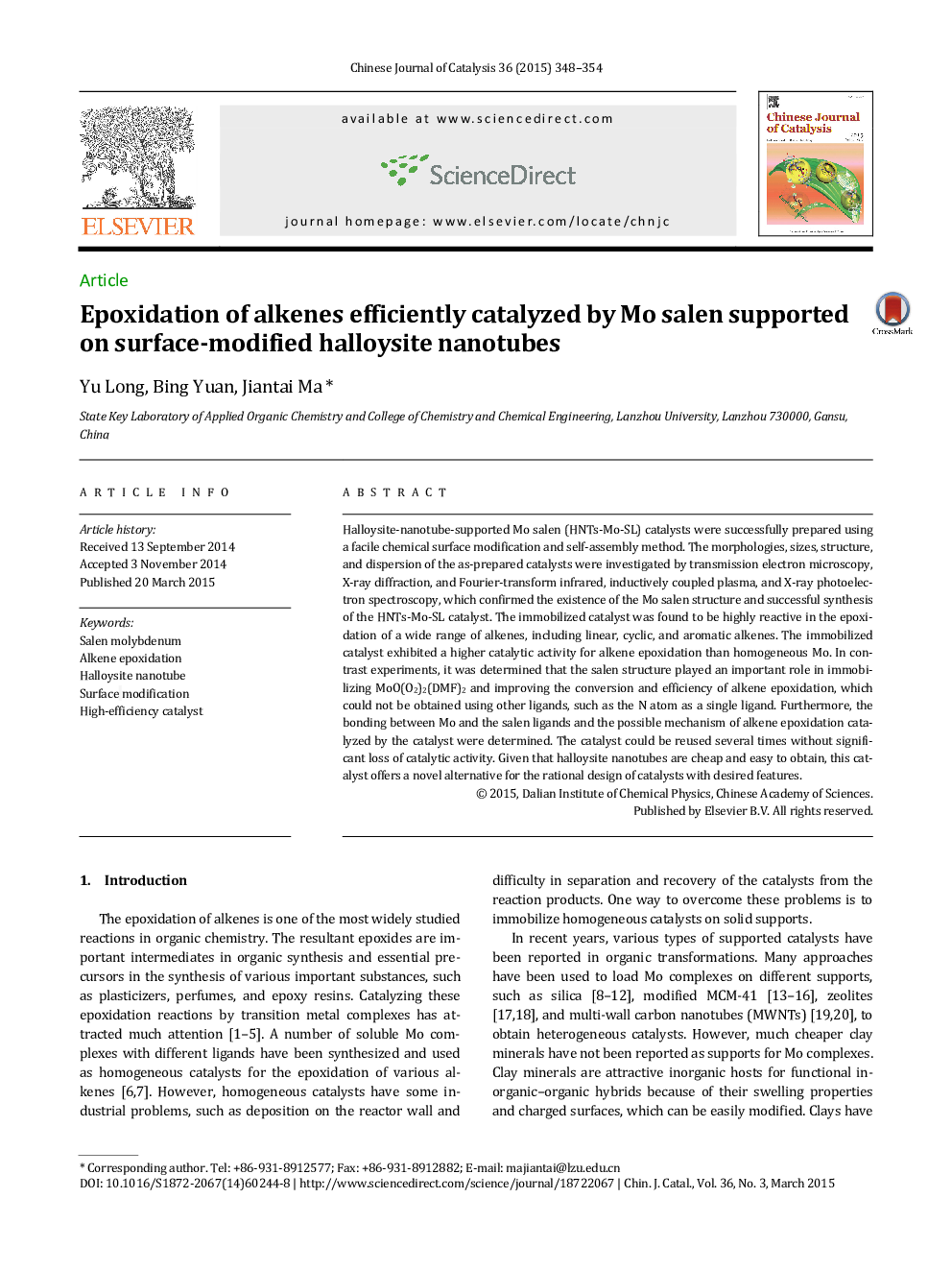| Article ID | Journal | Published Year | Pages | File Type |
|---|---|---|---|---|
| 59939 | Chinese Journal of Catalysis | 2015 | 7 Pages |
Halloysite-nanotube-supported Mo salen (HNTs-Mo-SL) catalysts were successfully prepared using a facile chemical surface modification and self-assembly method. The morphologies, sizes, structure, and dispersion of the as-prepared catalysts were investigated by transmission electron microscopy, X-ray diffraction, and Fourier-transform infrared, inductively coupled plasma, and X-ray photoelectron spectroscopy, which confirmed the existence of the Mo salen structure and successful synthesis of the HNTs-Mo-SL catalyst. The immobilized catalyst was found to be highly reactive in the epoxidation of a wide range of alkenes, including linear, cyclic, and aromatic alkenes. The immobilized catalyst exhibited a higher catalytic activity for alkene epoxidation than homogeneous Mo. In contrast experiments, it was determined that the salen structure played an important role in immobilizing MoO(O2)2(DMF)2 and improving the conversion and efficiency of alkene epoxidation, which could not be obtained using other ligands, such as the N atom as a single ligand. Furthermore, the bonding between Mo and the salen ligands and the possible mechanism of alkene epoxidation catalyzed by the catalyst were determined. The catalyst could be reused several times without significant loss of catalytic activity. Given that halloysite nanotubes are cheap and easy to obtain, this catalyst offers a novel alternative for the rational design of catalysts with desired features.
Graphical AbstractHalloysite-nanotube-supported molybdenum salen catalysts were successfully prepared by facile chemical surface modification, and they were stable and showed excellent catalytic activity for the epoxidation of alkenes.Figure optionsDownload full-size imageDownload as PowerPoint slide
